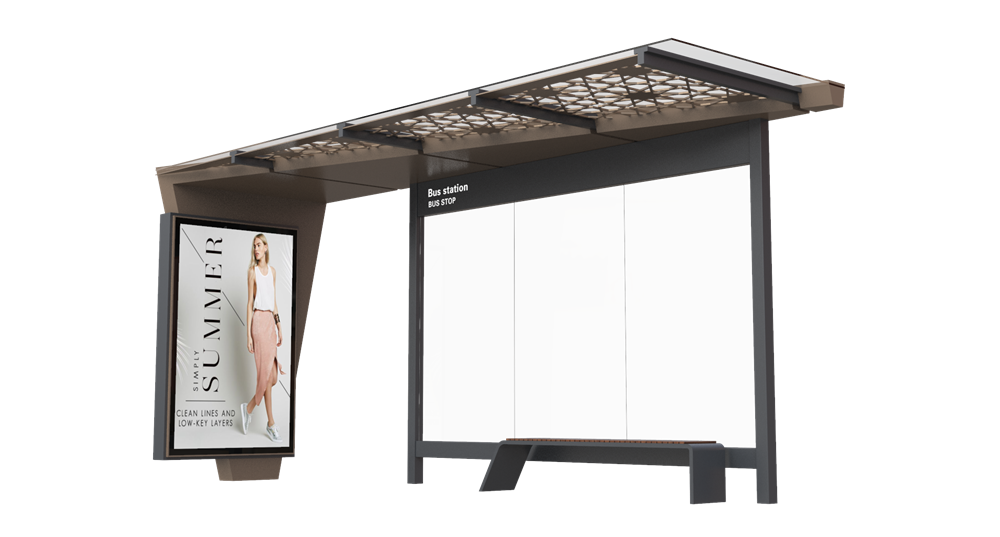Urban street bus shelters are a familiar sight in cities around the world, providing a valuable service to millions of daily bus passengers. These structures, typically made of metal, concrete or wood, serve as a covered waiting area for bus passengers, providing them with much-needed protection from the elements.
Ⅰ. Characteristics and Design
Bus shelters are typically designed with a sleek and modern aesthetic, complementing the urban landscape. They are often equipped with a roof to provide shade from the sun and protection from rain, snow or other inclement weather. The roof is often extended to create a covered seating area, providing passengers with a comfortable place to wait for their bus.
Inside the shelter, there are typically seating arrangements made of plastic or metal chairs, allowing passengers to rest while they wait. Additionally, the interior of the shelter is usually adorned with informational displays, providing real-time bus arrival times, schedules and any important updates. Some shelters also feature electronic ticketing systems, making it convenient for passengers to purchase tickets without having to leave the shelter.
Ⅱ. Functionality and Features
Bus shelters play an important role in urban transportation as they provide a safe and comfortable space for passengers to wait for their bus. By providing shade and protection from the elements, passengers are able to wait in comfort, even on the hottest or rainiest of days. The seating arrangement also ensures that passengers have a place to rest while they wait, making the experience more enjoyable.
In addition to providing a place for passengers to wait, bus shelters also serve as a central gathering point for bus riders. This brings a sense of community to the bus stop, as passengers can exchange greetings, chat or share a commuting experience while waiting for their bus.

Ⅲ. Benefits and Impact
The presence of bus shelters has numerous benefits for both passengers and the city as a whole. First and foremost, they provide a level of comfort and safety for bus passengers, ensuring that they can wait in a covered area protected from the elements and any unpredictable weather conditions. The shelters also provide much-needed shade in the summer months, protecting passengers from the hot sun and helping to reduce heat-related illnesses.
Beyond the direct benefits to passengers, bus shelters also contribute to the overall attractiveness of the city. Their modern and sleek design adds to the urban landscape, creating a sense of community and pride among residents. Additionally, well-maintained bus shelters send a positive message to visitors and tourists, showcasing the city's commitment to providing excellent public transportation.
Ⅳ. Future Outlook
As cities around the world continue to invest in public transportation, it is likely that bus shelters will play an even more integral role. With the increasing use of technology, future bus shelters may feature more advanced informational displays that provide real-time transit data, including real-time bus arrival information and route maps. Additionally, shelters may be designed with greater accessibility in mind, making them more friendly for older adults and those with disabilities.
Overall, urban street bus shelters serve as an important piece of the urban transportation puzzle, providing comfort, safety and convenience for millions of daily bus passengers. As cities strive to create more sustainable, walkable communities, these shelters will continue to play a crucial role in the years to come.








 Share to:
Share to: